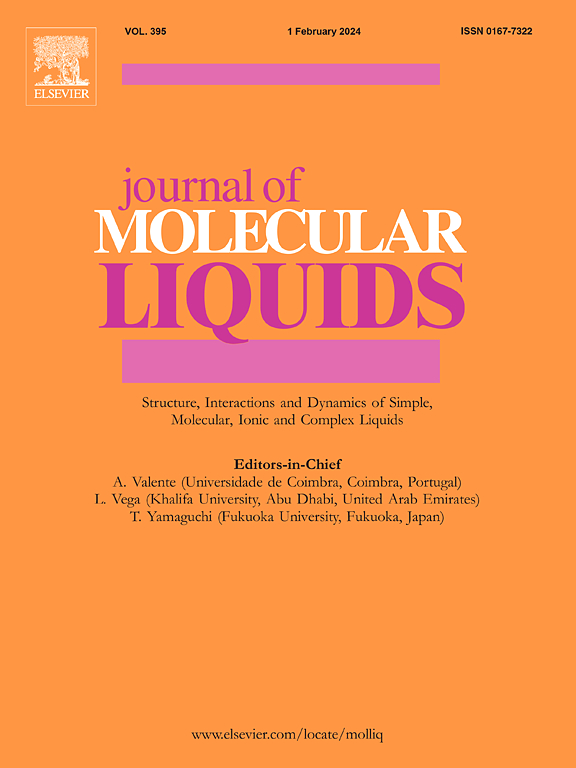低温锌离子混合电容器用高熵电解质
IF 5.3
2区 化学
Q2 CHEMISTRY, PHYSICAL
引用次数: 0
摘要
针对锌离子混合电容器在低温条件下粘度增加、离子电导率降低、结冰等问题,提出并成功制备了高熵电解质。通过最大限度地提高构型熵,由多种溶剂(≥5种溶剂)组成的优化的hehc在−60℃以下具有凝固点,抑制了氢的析出,调节了Zn2+的溶剂化结构,实现了无枝晶Zn沉积和稳定的Zn||Zn对称电池循环1000 h。在−20℃下循环5000次后,采用优化的HEE的ZIHC在2.0 V宽电压窗下提供了26.45 Wh kg−1的能量密度,保持了80%以上的电容。熵驱动的策略破坏了以水为主导的氢键网络,增强了界面润湿性,并平衡了温度下的离子电导率。这项工作证明了高熵工程在设计极端条件下储能的自适应电解质方面的潜力,为下一代基于锌的储能设备提供了一种有前途的方法。本文章由计算机程序翻译,如有差异,请以英文原文为准。
High-entropy electrolytes for low-temperature zinc-ion hybrid capacitors
To deal with the low-temperature problems faced by aqueous zinc-ion hybrid capacitors (ZIHCs), such as increased viscosity, decreased ionic conductivity, and icing, high-entropy electrolytes (HEEs) are proposed and successfully prepared. By maximizing configurational entropy, the optimized HEEs consisted of multiple solvents (≥5 solvents) exhibit freezing points below −60 °C, suppressed hydrogen evolution, and regulated Zn2+ solvation structures, endowing dendrite-free Zn deposition and stable Zn||Zn symmetric cell cycling of 1000 h. The ZIHC employing the optimum HEE maintains over 80 % capacitance after 5000 cycles at −20 °C, delivering an energy density of 26.45 Wh kg−1 with a wide voltage window of 2.0 V. The entropy-driven strategy disrupts water-dominated H-bond networks, enhances interfacial wettability, and balances ionic conductivity across temperatures. This work demonstrates the potential of high-entropy engineering to design adaptive electrolytes for extreme-condition energy storage, providing a promising approach for next-generation Zn-based energy storage devices.
求助全文
通过发布文献求助,成功后即可免费获取论文全文。
去求助
来源期刊

Journal of Molecular Liquids
化学-物理:原子、分子和化学物理
CiteScore
10.30
自引率
16.70%
发文量
2597
审稿时长
78 days
期刊介绍:
The journal includes papers in the following areas:
– Simple organic liquids and mixtures
– Ionic liquids
– Surfactant solutions (including micelles and vesicles) and liquid interfaces
– Colloidal solutions and nanoparticles
– Thermotropic and lyotropic liquid crystals
– Ferrofluids
– Water, aqueous solutions and other hydrogen-bonded liquids
– Lubricants, polymer solutions and melts
– Molten metals and salts
– Phase transitions and critical phenomena in liquids and confined fluids
– Self assembly in complex liquids.– Biomolecules in solution
The emphasis is on the molecular (or microscopic) understanding of particular liquids or liquid systems, especially concerning structure, dynamics and intermolecular forces. The experimental techniques used may include:
– Conventional spectroscopy (mid-IR and far-IR, Raman, NMR, etc.)
– Non-linear optics and time resolved spectroscopy (psec, fsec, asec, ISRS, etc.)
– Light scattering (Rayleigh, Brillouin, PCS, etc.)
– Dielectric relaxation
– X-ray and neutron scattering and diffraction.
Experimental studies, computer simulations (MD or MC) and analytical theory will be considered for publication; papers just reporting experimental results that do not contribute to the understanding of the fundamentals of molecular and ionic liquids will not be accepted. Only papers of a non-routine nature and advancing the field will be considered for publication.
 求助内容:
求助内容: 应助结果提醒方式:
应助结果提醒方式:


